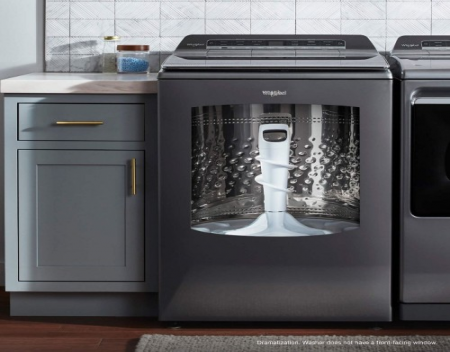Tipos de aparatos
- Aire acondicionado
- Automobile
- Chainsaw
- Circular Saw
- Lavaplatos
- Drills
- Secadora
- Drywall Screw Gun
- Horno
- Gas Fireplace
- Gas Grill
- Gas Patio Heater
- Grinder
- Heat Pump
- Impact Driver
- Impact Wrench
- Microonda
- Nailer
- Orbital Sander
- Calentadores de piscina
- Powerwall
- Distancia
- Refrigerador
- Television
- Lavadora
- Calentador de agua
Marcas de electrodomésticos
- A.O. Smith
- AccuCold
- Admiral Craft
- AGA
- Airrex
- Amana
- Ambiance
- American Range
- American Standard
- American Water Heaters
- Aquacal
- Armstrong
- Asko
- Avanti
- Avenlur
- Azure
- Beko
- Bellfires
- Bertazzoni
- Blackstone
- Blaze
- Blomberg
- BlueStar
- Bosch
- Bradford White
- Bromic
- Bryant
- Cafe
- Calcana
- Capital
- Carrier
- Char-Broil
- Char-Griller
- Chrysler
- Coates
- Coleman
- Comfortmaker
- Commercial Chef
- Continental
- Cosmo
- Cove
- Crown Verity
- Dacor
- Daikin
- Danby
- Danfoss
- DaVinci
- DCS
- Deco
- DeWALT
- Ducane
- Dyna-Glo
- Dyson
- EcoSmart
- Electrolux
- Element4
- Empava
- Equator
- Eurodib
- European Home
- Everdure
- Farberware
- Fhiaba
- FibroPool
- Fire Sense
- Fisher
- FiveStar
- Flare
- Flash Furniture
- Focus
- Ford
- Forno
- Forte
- Frigidaire
- Fulgor Milano
- Gaggenau
- GE
- General Motors
- GlowBrand
- Goodman
- Grundig
- GSW
- Haier
- Hayward
- Heatstar
- Heil
- Hestan
- Hisense
- Hitachi
- Hotpoint
- iio
- Ilve
- Impecca
- Ingignia
- Insignia
- JennAir
- John Wood
- Keeprite
- Kenmore
- Kenyon
- KitchenAid
- Kucht
- La Cornue
- Lennox
- LG
- Liebherr
- Lifetime
- Lion
- Luxaire
- Lynx
- Magic Chef
- Marvel
- Maytag
- McQuay
- MicroFridge
- Midea
- Miele
- Migali
- Monogram
- Montigo
- Mr Heater
- Napoleon
- Navien
- Nexgrill
- Noritz
- Panasonic
- Patio Comforts
- Payne
- Pentair
- Perlick
- PITT
- Premier
- Raypak
- Real Fyre
- Regency
- Reliance
- Rheem
- Rinnai
- Roma
- Ruud
- Saber
- Samsung
- Schwank
- Sharp
- Smeg
- Solas
- Sony
- Spartherm
- Speed Queen
- StaRite
- State Water Heaters
- Stiebel Eltron
- SubZero
- Summerset
- Summit
- SunGlo
- SunPak
- Sunpentown
- SunStar
- Superiore
- Takagi
- TCL
- TEC
- Tempstar
- Tesla
- Thermador
- Thor Kitchen
- Toshiba
- Town and Country
- Toyota
- Traeger
- Trane
- Twin Eagles
- U-Line
- Unique
- Vaillant Group
- Valor
- Verona
- Victory
- Viessmann
- Viking
- Vizio
- Weber
- Westinghouse
- Whirlpool
- Whynter
- York
- ZLINE
Categorías de artículos
- Aire Acondicionado
- Cuidado de los electrodomesticos
- Appliance News
- Dishwasher News
- Maquinas de secado
- Hornos
- Gas Fireplaces
- Microondas
- Calentadores de piscina
- Frigorificos
- Estufas - Cocinas
- Trucos y consejos
- Lavadoras
- Water Heaters
Más artículos
Whirlpool Washer is Making a Loud Noise

Whirlpool Washer is Making a Loud Noise.
Bearing.
The tub bearing is mounted in the middle of the outer tub. The tub bearing helps to keep the inner tub spinning smoothly. Replacing the tub bearing is a very involved repair and will require disassembling most of the washer. If the tub bearing is defective, we recommend replacing both the outer tub and the bearing.
Rear Drum with Bearing.
The rear drum has a bearing or bearings in it to keep the inner tub spinning smoothly. If the tub bearing system is defective the washer can become very noisy. On some machines bearings are sold separately from the rear drum, however we recommend replacing both the outer drum and bearing as an assembly if the manufacturer offers the components together because removing and pressing in the new bearing can be exceptionally difficult. Be aware that replacing the outer tub and bearing is also not easy and can be very costly.
Tub Bearing.
The tub bearing is mounted in the middle of the outer tub. The tub bearing helps to keep the inner tub spinning smoothly. Replacing the tub bearing is a very involved repair and will require disassembling most of the washer. If the tub bearing is defective, we recommend replacing both the outer tub and bearing as an assembly if the manufacturer offers the components together.
Tub Seal and Bearing Kit.
The tub bearing is mounted in the middle of the outer tub. The tub bearing helps to keep the inner tub spinning smoothly. If the washer is noisy during the spin cycle or is leaking from the bottom of the tub near the transmission, the tub seal and bearing are likely defective. Replacing the tub bearing is a very involved repair and will require disassembling most of the washer. If the tub bearing is defective, we recommend replacing the outer tub and bearing at the same time.
Pulley.
The drive pulley might be worn out, cracked, loose or bent. Remove the drive pulley and inspect it carefully. If the drive pulley is damaged or defective, replace it.
Belt Kit.
One of the drive belts might be defective. Over time, the drive belt can dry out and start to crack or burn. Eventually, a piece of the belt can break off, causing the belt to make a loud noise whenever the motor is running. To determine if the drive belt is broken, inspect the drive belt. If the drive belt is broken or damaged, replace it.
Clutch.
The clutch assembly makes the connection between the transmission and the inner tub. It helps the tub to gradually get up to the proper spin speed. As the clutch wears out over time, it may become loud during the spin cycle or just after the spin cycle finishes. The clutch is not repairable—if the clutch is worn out, replace it.
Drive Belt.
The drive belt might be defective. Over time, the drive belt can dry or burn out and starts to crack. Eventually, a piece of the belt can break off, causing the belt to make a loud noise whenever the motor is running. To determine if the drive belt is broken, inspect the drive belt. If the drive belt is broken or damaged, replace it.
Motor Coupling.
The motor coupling might have failed. The motor coupling connects the motor to the washer transmission. If the washer is overloaded, the motor coupling will fail in order to protect both the motor and transmission. The motor coupling can also fail due to normal wear. Inspect the motor coupling to determine if it is broken. If the motor coupling is broken, replace it.
Transmission.
The washer transmission might be worn out or defective. Transmissions have gears in them that can fail causing the washer to be noisy during operation. However, this is almost never the case. Before replacing the transmission, first, check all of the other more commonly defective parts.
SOURCE: repairclinic.com

Whirlpool Washer is Making a Loud Noise.
Bearing.
The tub bearing is mounted in the middle of the outer tub. The tub bearing helps to keep the inner tub spinning smoothly. Replacing the tub bearing is a very involved repair and will require disassembling most of the washer. If the tub bearing is defective, we recommend replacing both the outer tub and the bearing.
Rear Drum with Bearing.
The rear drum has a bearing or bearings in it to keep the inner tub spinning smoothly. If the tub bearing system is defective the washer can become very noisy. On some machines bearings are sold separately from the rear drum, however we recommend replacing both the outer drum and bearing as an assembly if the manufacturer offers the components together because removing and pressing in the new bearing can be exceptionally difficult. Be aware that replacing the outer tub and bearing is also not easy and can be very costly.
Tub Bearing.
The tub bearing is mounted in the middle of the outer tub. The tub bearing helps to keep the inner tub spinning smoothly. Replacing the tub bearing is a very involved repair and will require disassembling most of the washer. If the tub bearing is defective, we recommend replacing both the outer tub and bearing as an assembly if the manufacturer offers the components together.
Tub Seal and Bearing Kit.
The tub bearing is mounted in the middle of the outer tub. The tub bearing helps to keep the inner tub spinning smoothly. If the washer is noisy during the spin cycle or is leaking from the bottom of the tub near the transmission, the tub seal and bearing are likely defective. Replacing the tub bearing is a very involved repair and will require disassembling most of the washer. If the tub bearing is defective, we recommend replacing the outer tub and bearing at the same time.
Pulley.
The drive pulley might be worn out, cracked, loose or bent. Remove the drive pulley and inspect it carefully. If the drive pulley is damaged or defective, replace it.
Belt Kit.
One of the drive belts might be defective. Over time, the drive belt can dry out and start to crack or burn. Eventually, a piece of the belt can break off, causing the belt to make a loud noise whenever the motor is running. To determine if the drive belt is broken, inspect the drive belt. If the drive belt is broken or damaged, replace it.
Clutch.
The clutch assembly makes the connection between the transmission and the inner tub. It helps the tub to gradually get up to the proper spin speed. As the clutch wears out over time, it may become loud during the spin cycle or just after the spin cycle finishes. The clutch is not repairable—if the clutch is worn out, replace it.
Drive Belt.
The drive belt might be defective. Over time, the drive belt can dry or burn out and starts to crack. Eventually, a piece of the belt can break off, causing the belt to make a loud noise whenever the motor is running. To determine if the drive belt is broken, inspect the drive belt. If the drive belt is broken or damaged, replace it.
Motor Coupling.
The motor coupling might have failed. The motor coupling connects the motor to the washer transmission. If the washer is overloaded, the motor coupling will fail in order to protect both the motor and transmission. The motor coupling can also fail due to normal wear. Inspect the motor coupling to determine if it is broken. If the motor coupling is broken, replace it.
Transmission.
The washer transmission might be worn out or defective. Transmissions have gears in them that can fail causing the washer to be noisy during operation. However, this is almost never the case. Before replacing the transmission, first, check all of the other more commonly defective parts.
SOURCE: repairclinic.com




